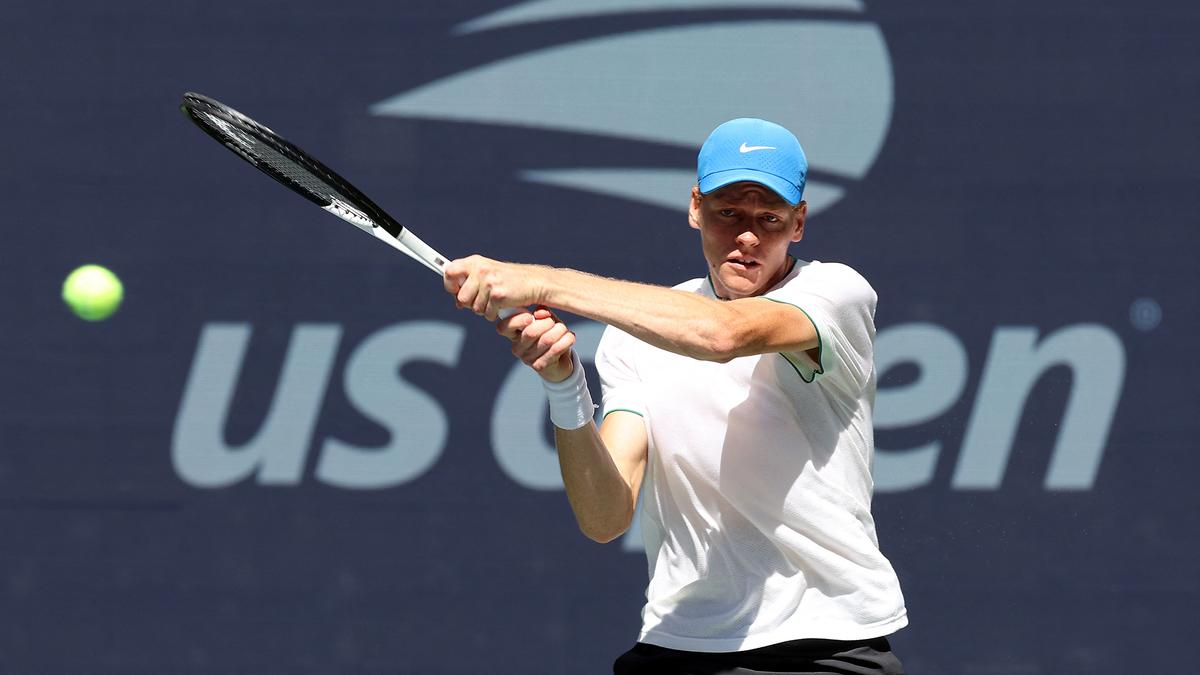US Open 2024: Why is Jannik Sinner allowed to play despite two failed dope tests in March
Top seed Jannik Sinner begins his US Open 2024 campaign with a first-round clash against Mackenzie McDonald, one of the local favourites, at the Arthur Ashe Stadium in New York on Tuesday.
World No. 1 Sinner, who won this year’s Australian Open, enters the final Major of the year in the middle of a huge controversy. Last Tuesday, the International Tennis Integrity Agency (ITIA) announced that the 23-year-old Italian had failed two dope tests in March this year but he will not be suspended.
Sinner is allowed to compete, revealed ITIA, because an independent tribunal said that he bore ‘No Fault or Negligence’ for how the anabolic steroid, which resulted in positive tests, entered his body.
READ | Jannik Sinner fires two team members, says outcome of steroids case was a relief
Here is the complete timeline of events which explains how Jannik Sinner has escaped from a possible two-year doping ban:
February 12: Umberto Ferrara, Sinner’s fitness coach, purchases a medical spray in Italy with the brand name ‘Trofodermin’ which is used to heal cuts. Trofodermin is available over the counter in Italy and does not require prescription. However, it contains Clostebol, an anabolic androgenic steroid and a Prohibited Substance according to World Anti-Doping Agency.
March 3: Giacomo Naldi, Sinner’s physiotherapist, cuts the little finger on his left hand with a scalpel while reaching into his treatment bag during the Indian Wells Masters event in California. Naldi puts a bandage on his finger. The same evening, Sinner observes the injury during a session with Naldi and asks if he has used anything to treat it. Naldi replies “no.”
March 5: On Ferrara’s recommendation, Naldi uses Trofodermin to treat the cut. He uses the spray daily till March 13. At the same time, Naldi gives full-body massages to Sinner, who suffers from a skin condition called Psoriasiform Dermatitis. After applying the spray on his injury, Naldi does not use gloves or wash hands before treating Sinner.
March 10: Sinner tests positive for metabolites of Clostebol during his participation at the Indian Wells Masters. Testing positive for Clostebol means a four-year doping ban. If the contamination is unintentional, the ban is reduced to two years. However, there is a clause where the player can avoid any ban if he manages to show there was no fault or negligence on his part.
March 18: Sinner again tests positive for the same substance, just before the Miami Open.
ALSO READ | Novak Djokovic laments lack of protocols after Jannik Sinner’s steroids case
April 4: Sinner is provisionally suspended for the first failed dope test following a Pre-Charge letter from ITIA.
April 5: The suspension is lifted following an urgent application in which Sinner contends there is no fault or negligence on his part.
April 17: Sinner is again provisionally suspended, this time for the second failed dope test.
April 24: The suspension is yet again lifted following an urgent application in which Sinner contends there is no fault or negligence on his part.
In the intervening period, the ITIA arranges and conducts interviews with Sinner and his support team in Italy and online and also takes scientific advice from two experts prior to issuing the notice of charge to Sinner.
May 29: Sinner provides a response to the Pre-Charge letters issued on April 4 and April 17.
May 30: Following Sinner’s response, the ITIA issues a Notice of Charge, charging the Italian with two anti-doping rule violations.
June 19: Sinner responds to the Notice of Charge by providing the ITIA with detailed submissions explaining the circumstances leading to the two positive tests and seeks a resolution to the proceeding on the basis of ‘No Fault or Negligence’ to avoid the applicable period of ineligibility of two years.
August 1: An Independent Tribunal with Dr David Sharpe KC as its Chair along with Benoit Girardin and Tamara Gaw as the other members is formed to hear and determine the dispute.
August 15: The Tribunal conducts a hybrid-oral hearing. Apart from the statements of the various parties involved, the Tribunal also notes that three independent experts were consulted to test the plausibility of Sinner’s explanation. The Tribunal determines that none of the experts suggest that Sinner’s explanation is inconsistent with the scientific analysis. There is no suggestion that the tiny concentration found in Sinner’s system would have had any performance enhancing effect.
The Tribunal concludes that Sinner bears ‘No Fault or Negligence’ for committing the two anti-doping rule violations and therefore, he shall not be banned.
However, it decides that Sinner shall be stripped of prize money and points earned at Indian Wells. But it also says that any medals, title, ranking points and prize money earned by the Italian post Indian Wells and before this verdict shall not be disqualified.
WADA and the Italian Anti-Doping Organisation (NADO Italia) both have the right to appeal against the decision in the Court of Arbitration for Sport.


